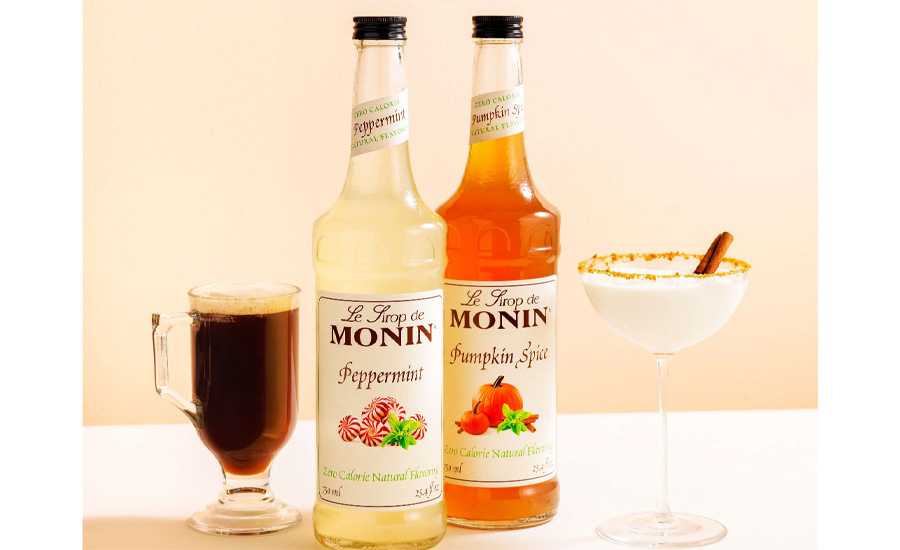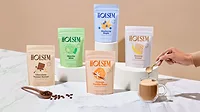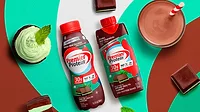Category Focus: Coffee
Consumers enjoy coffee from home
Cold brew, nitro coffee options flourish

Image courtesy of Death Wish Coffee
In her 1980 hit “9 to 5,” country music icon Dolly Parton sings about tumbling out of bed and pouring herself “a cup of ambition,” a.k.a. a cup of coffee, before heading to work for the boss man. A cup of ambition is often the way many folks like to jumpstart their day, whether it be made at home with a trusty coffee pot or by a barista in a trendy shop — though recently many consumers are opting for ready-to-drink (RTD) options at home.
Sally Lyons Wyatt, executive vice president and practice leader at Chicago-based Information Resources Inc. (IRI), notes that coffee, not including RTD or refrigerated beverages, has seen a growth online and with single-serve pods.
“Creating a specialized drink coupled with the convenience of having a cup in the home office has transformed the coffee landscape,” she says. “Using flavors/additives have boosted the at-home cup of coffee into a unique, tasty offering. In fact, we find that coffee concentrate and flavor additives are growing in brick-and-mortar.”
Wyatt explains that consumers still are enjoying their coffee at home and many are “trying to have the out-of-home coffee house experience at home.” She adds that brick-and-mortar establishments have experienced a softness in several areas because of factors such as inflation, supply chain issues and consumer preference.

Data from IRI for the 52 weeks ending July 10, shows that the coffee category has seen sales of $11.3 billion, an increase of 4.5% compared with that time period last year.
Single-cup coffee is outpacing the category’s overall performance. At $5.1 billion in sales for the 52 weeks ending July 10, the segment increased 6.1% increase from last year. On the other hand, ground decaffeinated coffee saw only $296 million in sales, a decrease of 0.7% compared with last year at the time.
The dollar sales of the RTD tea/coffee category hit $7.9 billion, a jump of 2.5% from last year. Within that market, cappuccino/iced coffee sales totaled $3.2 billion for the 52 weeks ending July 10, a 4.1% increase.
In the refrigerated tea and coffee category, which saw overall sales of $2.9 billion, refrigerated RTD coffee saw an increase of 27% since last year, with sales at $948 million.
Caleb Bryant, associate director of food and drink at Mintel, Chicago, notes that the total retail coffee sales hit an estimated $18.9 billion this year, a 33% increase from 2017.
“Current economic conditions largely benefits the retail coffee market as consumers increasingly cut back on their foodservice coffee expenditures,” Bryant says. “Retail coffee is positioned for continued growth, especially as more consumers source specialty coffee drinks from home, but economic forces will dictate the market’s trajectory; consumers will reduce their home coffee expenditures if the economy worsens or enters a prolonged period of uncertainty.”
He suspects that, among the array of coffee segments — such as whole bean, RTD and instant — single-cup and RTD are the fastest-growing segments. IRI’s Wyatt agrees that RTD coffee, as well as coffee concentrate and coffee additives/flavorings are “providing positive impacts with dollars, units and volume.”
| DOLLAR SALES | % CHANGE vs PRIOR YEAR | MARKET SHARE | % CHANGE vs PRIOR YEAR | ||
| 1 | Single-cup coffee | $5,189,852,547 | 6.1 | 45.9 | 0.7 |
| 2 | Ground coffee | $4,202,706,728 | 3.4 | 37.2 | -0.4 |
| 3 | Instant coffee | $738,342,376 | 3.1 | 6.5 | -0.1 |
| 4 | Whole coffee beans | $608,389,639 | 1.7 | 5.4 | -0.2 |
| 5 | Ground decaffeinated coffee | $296,613,829 | -0.7 | 2.6 | -0.1 |
| 6 | Coffee additive/flavoring | $108,759,020 | 17.5 | 1 | 0.1 |
| 7 | Instant decaffeinated coffee | $89,881,626 | -1.3 | 0.8 | -0.1 |
| 8 | Coffee concentrate | $71,448,178 | 19.3 | 0.6 | 0.1 |
| 9 | Coffee substitutes | $2,700,894 | -7.7 | 0.02 | 0 |
| Category Total* | $11,308,694,837 | 4.5 | 100 | --- | |
*Includes brands not listed
Source: Information Resources, Inc. (IRI), Chicago. Total U.S. supermarkets, drug stores, gas and convenience stores, mass merchandisers, military commissaries, and select club and dollar retail chains for the 52 weeks ending July10.
“Cold brew and nitro sub-segments have provided variety with more options for consumers to have their coffee house experience in their home, but they have also taken away purchases from traditional segments and also experiencing softness in sales year to date (YTD) 2022,” Wyatt says.
New York-based Beverage Marketing Corporation’s (BMC) managing director of research, Gary Hemphill, had a similar opinion of RTD coffee. He says consumers “have been trading up to products that offer benefits and attributes they want,” and that, in the RTD coffee segment, cold brew and nitro coffees are the most successful examples of this. He credits the prosperity of the RTD coffee to the convenience of cold brew and nitro coffee options.
“Cold brew in particular has been a big boost to the coffee category,” he says. “People like its bold and smooth taste profile. Most cold brew is sold at premium pricing, which has given dollar sales an added boost.”
What’s hot now
Like BMC’s Hemphill points out, the RTD coffee arena has been hot, especially among the younger generation, who often prefers cold drinks. Mintel’s Bryant concurs.
“Cold brew coffee is one of the fastest-growing areas of the coffee market, and its rise reflects the high consumer interest in cold coffee beverages,” Bryant says. “Forty-two percent of Gen Z consumers have had RTD coffee in the past three months, compared to only 28% who have had any hot-drip brewed coffee. The future of coffee is cold, and cold brew’s growth signals opportunities for new cold-coffee brewing techniques.”
Mintel’s Bryant also pointed out that social media impacts coffee culture, especially social media influencers — “particularly those on TikTok,” the short video-making app.
“Forty-nine percent of Gen Z consumers learn about coffee topics from TikTok, compared to 37% who learn from coffee shop chains,” Bryant says. “This shift of influence from foodservice to TikTokers ultimately benefits the retail coffee market, suggests opportunities for brands to collaborate with coffee influencers, and indicates the need for brands to create products and develop marketing strategies that align with online trending coffee-related topics.”
Another coffee trend Bryant recognizes is functional coffees that go beyond the traditional energy boost. He considers these beverages as representing a “whitespace opportunity within the wider market.” Brands have the opportunity to add to coffee’s rejuvenating properties with ingredients that can provide “sustained energy and concentration.” Bryant cites the examples of I-theanine and adaptogenic mushrooms as additional ingredients in coffee.
“Opportunity exists to position such coffee drinks as the ultimate functional drink that provides workers and students the energy and concentration booster necessary to get through the afternoon slump and compete against energy drinks during the afternoon occasion,” he says.
The Beverage Innovation team at Monin Americas notes that consumers are focused on "convenience, high-quality sustainability and the addition of coffee alternatives."
“With functionality in mind, consumers are also loving supplements and adaptogens in their coffee — medicinal mushrooms, collagen, protein, turmeric, elderberry, ashwaghanda —being in search of physical and mental health benefits found in a holistic beverage that meets all their needs,” says the team.
What’s brewing next
IRI’s Wyatt suspects that RTD coffee will sustain its popularity within the coffee category.
“Given the current and looming economic conditions, our [point-of-view] is that pods and refrigerated RTD will continue to boost sales,” she says. “Look for new options in the RTD aisle. Cross-pollination from other aisles might continue as well.
“For the other segments, it is important to look at their channel strategies (including price/size architecture) to ensure they have the right products in the right places at a price they can afford,” she continues. “All segments should leverage targeted communications to communicate benefits and drive excitement for the category and their brands.”
BMC’s Hemphill says he expects the coffee category to “continue to have modest growth,” anticipating that RTD coffee will “outpace the overall category growth.”
Looking for a reprint of this article?
From high-res PDFs to custom plaques, order your copy today!






